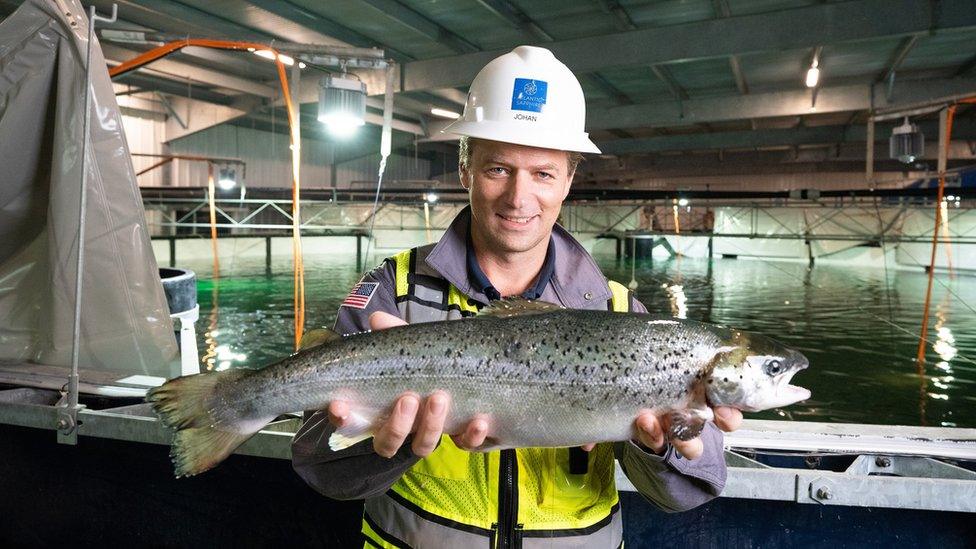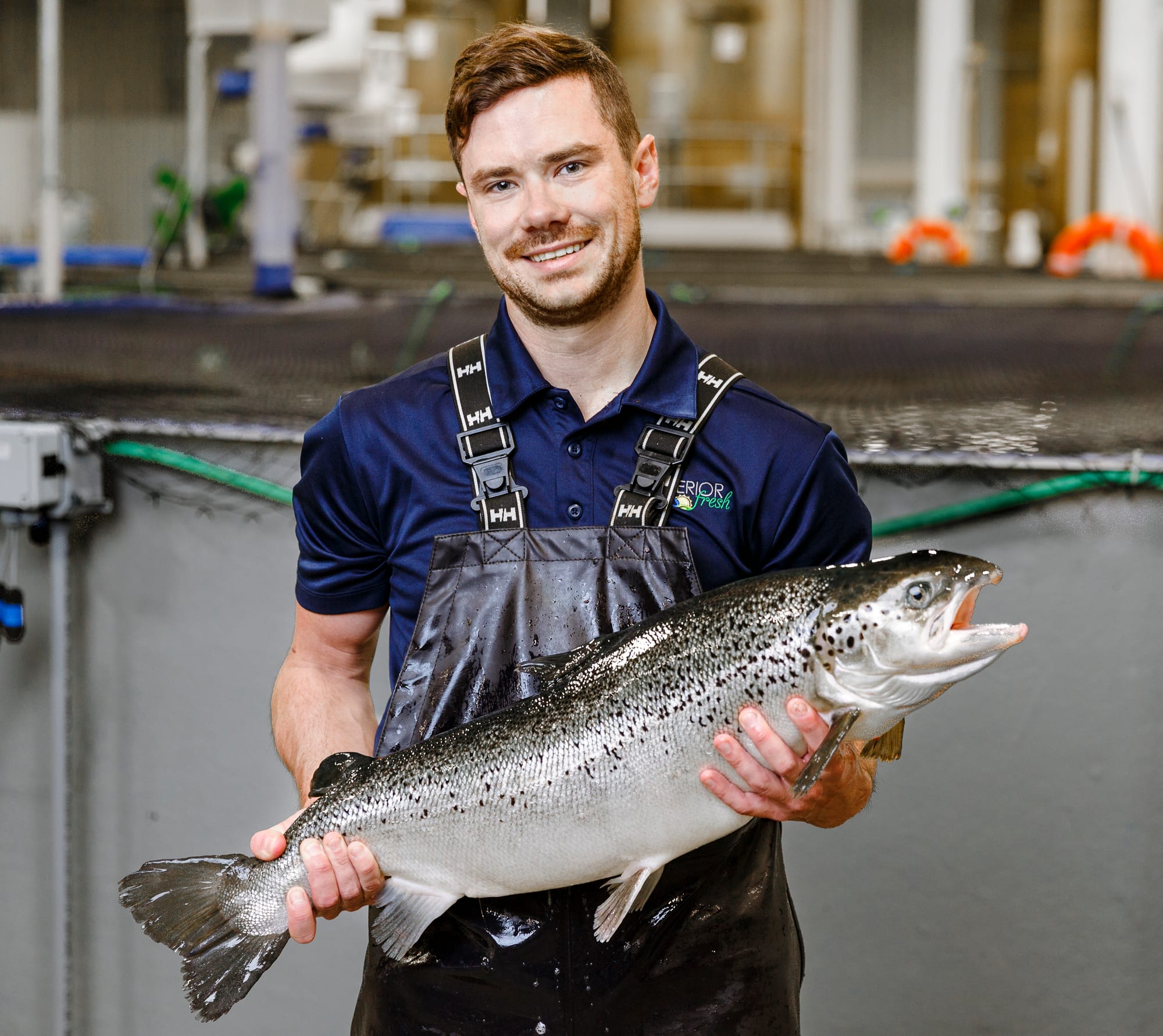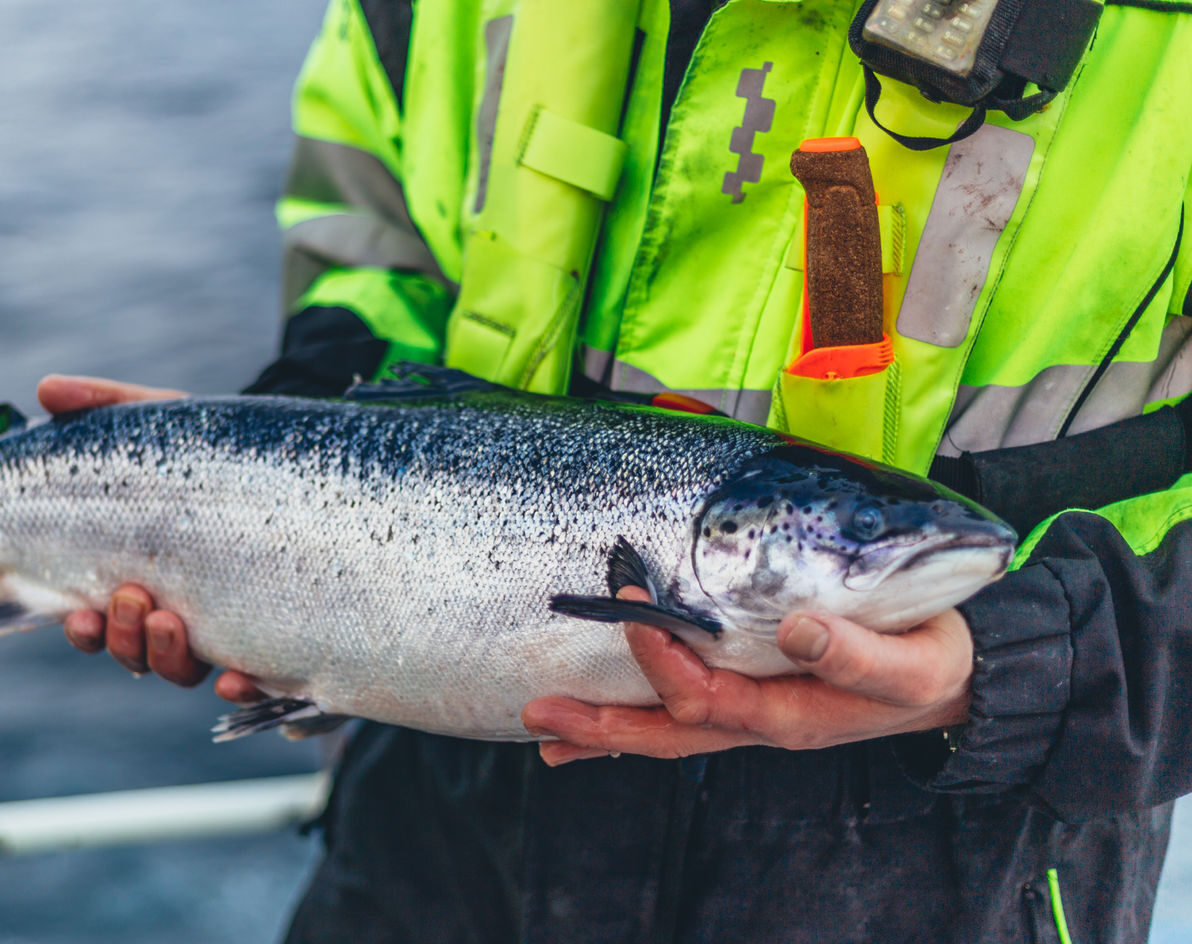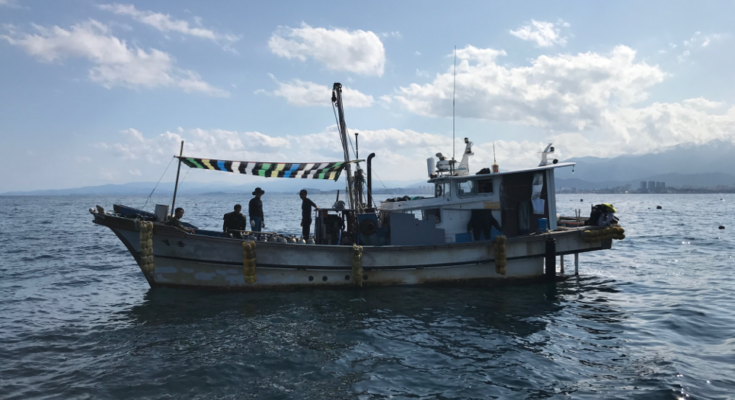South Korea is one of the top fish and seafood consuming countries in the world. But they have just started farming.
Bonafide has been visiting salmonid farm in South Korea. The marine farm produces salmon offshore. In other words, the salmon are kept about 4 kilometers away from the coast.
A perfect environment to grow out salmon or salmon trout (can you tell the difference between salmon and sea trout, the facts).
Innovation at work

The farm is located at the East Cost in the Japanese See. A technique we haven’t seen so far is being used here.
For starters, they have gotten a patent for a kind of lifting cage technology. Normally, the cage as shown above cannot be seen because it is being kept in deeper waters.
For demonstration purposes, the cage was lifted to make us see it.
The advantage of this technology is, you can avoid possible harm to the fish that occurs from temperature changes in the water. This can happen due to wind, storms, sea lice and so forth.
Below you see a drawing of the technology, which shows how the cage is fixed on the bottom of the sea and stays in calm water in some depth to stabilise water temperature for the fish and improve their habitat.
The lifting cage is fixed on the ground. Because of this, having it moved sideways is almost impossible.
This has quite a few advantages when compared with more conventional cages. At sea level, fish enjoy a better environment than just below the surface. Temperatures are less likely to fluctuate much, something that generally happens during summer. Higher temperatures are not desirable when raising fish.
Best is that lower temperatures at see level reduce the vulnerability risk of the fish getting sick. In particular, the spread of a disease or a virus for that matter (e.g., something like a virus called infectious salmon anemia, or I.S.A.) is reduced significantly.
More advantages this technology offers

A big advantage is that moving the cage to the bottom of the sea (see above drawing) is that the risk for the fish getting infected by a disease can be reduced thanks to much cooler water.
As well, because the cage is anchored and stabilized far below the surface, the environment is also calmer. Hence, the fish enjoy “nicer” surroundings.
Another nice feature is that in this example, solar power is used to further improve the aquaculture’s sustainability balance sheet or environmental footprint.
The above shows a small power station with its solar panel. This enables the operator to run the whole system independently and without having to run a diesel generator to get the electricity needed to manage the cage.




